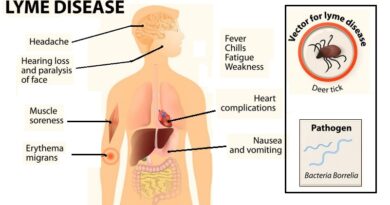The Treatment of Gonorrhea: Facing the Challenge of Antibiotic Resistance
The treatment of gonorrhea can be effective with antibiotics, but recent developments have posed new challenges, as antibiotic-resistant strains of gonorrhea are on the rise. This growing resistance threatens the effectiveness of current treatments and underscores the importance of proper treatment protocols.
Understanding Gonorrhea and Its Symptoms
Gonorrhea can infect the genital tract, rectum, and throat. Symptoms in men typically include a burning sensation during urination and discharge from the penis. Women, on the other hand, can experience increased vaginal discharge, pelvic pain, or bleeding between periods. In some cases, gonorrhea can be asymptomatic, especially in women, which makes screening and early detection even more critical.
Left untreated, gonorrhea can lead to severe complications. In women, it can cause pelvic inflammatory disease (PID), which can lead to infertility or ectopic pregnancies. In men, gonorrhea can cause painful inflammation of the testicles and, in rare cases, infertility. Furthermore, untreated gonorrhea can increase the risk of contracting or transmitting HIV.
The Treatment of Gonorrhea
Traditionally, gonorrhea has been treated with antibiotics. In recent years, the Centers for Disease Control and Prevention (CDC) has recommended dual therapy with two antibiotics: an injection of ceftriaxone and oral azithromycin/ or doxycycline. This approach aims to treat the infection and lower the risk of resistance.
With the rise of antibiotic-resistant strains of Neisseria gonorrhea, treatment is more complicated. Resistant strains can survive even when treated with first-line antibiotics, making them harder to eradicate. This growing resistance is a significant public health concern and highlights the importance of adhering to prescribed treatments.
Current Recommended Treatment
- As of the latest guidelines from the Centers for Disease Control and Prevention (CDC), the recommended first-line treatment for uncomplicated gonorrhea involves a single intramuscular dose of ceftriaxone (500 mg/1000mg). Ceftriaxone (Brand name: Rocephin): An injectable antibiotic that is the gold standard for treating gonorrhea. This antibiotic, from the cephalosporin class, is effective for most gonorrhea infections.
- If chlamydial co-infection has not been excluded, oral doxycycline (100 mg twice daily for 7 days) is also recommended to treat potential co-infection.
- Read the new treatment update 2025 as per CDC.
The Growing Threat of Antibiotic Resistance
Antibiotic resistance in gonorrhea is rapidly evolving, with strains showing reduced susceptibility to common treatments like azithromycin, ciprofloxacin, and cephalosporins like cefixime. Resistance to ceftriaxone, though rare, is beginning to emerge, leading to heightened concerns.
The rise of multi-drug-resistant (MDR) gonorrhea has prompted global health authorities to emphasize the importance of proper antibiotic use and the development of new treatments. Surveillance efforts, like the World Health Organization’s Global Gonococcal Antimicrobial Surveillance Programme (WHO GASP), track resistance patterns to stay ahead of potential treatment failures.
New Treatment Approaches
Researchers are actively working on new treatments. Some recent developments include:
- Zoliflodacin is a new oral antibiotic that has shown promise in clinical trials against resistant gonorrhea strains.
- Delafloxacin is another new antibiotic that is evaluated for its potential to treat resistant strains.
- These treatments are still undergoing further research but they represent hopeful alternatives to combat growing resistance.
Why Completing the Full Course of Antibiotics Is Crucial
One of the ways to prevent antibiotic resistance is to take the full course of prescribed antibiotics. Even if symptoms improve or disappear after a few doses, it is essential to finish the treatment as directed by a healthcare provider. Stopping early increases the risk of the bacteria surviving and evolving to resist the antibiotics.
Individuals treated for gonorrhea should avoid sexual activity until they and their partner(s) have completed treatment. Re-infection is possible if precautions are not taken, and repeated intake of antibiotics can increase the likelihood of developing resistant strains.
Preventing Gonorrhea and Staying Informed
While gonorrhea is treatable, prevention is always better than cure. Safe sex practices, including consistent condom use, regular STI testing, and open communication with sexual partners, are essential in reducing the risk of transmission. For those who suspect they have been exposed to gonorrhea, early testing and treatment are crucial to minimizing complications and preventing the spread of resistant strains.
Conclusion
Gonorrhea continues to be a global health challenge, but treatment options continue to be effective when antibiotics are used correctly. As antibiotic resistance grows, it becomes increasingly important to follow treatment guidelines carefully and stay informed about prevention methods. By taking the right steps, we can protect our health and help curb the spread of resistant gonorrhea strains, safeguarding future generations against this persistent STI.




